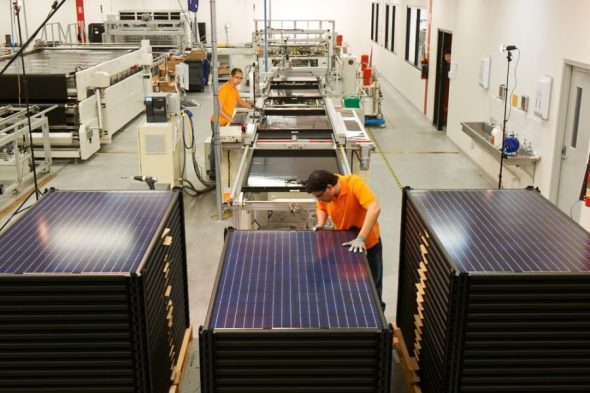CSIRO has published a new report that details the enormous potential Australia has to become a global superpower in PV energy generation and exports, but warns that it must develop its own fully integrated domestic silicon and solar supply chains to realize this potential.
The Australian Silicon Action Plan (ASAP), commissioned by CSIRO and authored by PricewaterhouseCoopers Australia (PwC), urges the nation to “quickly” develop a full-fledged domestic supply chain for silicon and solar cells, in order to improve the nation’s energy independence and sovereign capability.
CSIRO Senior Principal Research Scientist Chris Vernon said the report shows that Australia has great potential when it comes to the leading role it can play in the global energy transition. However, its current reliance on concentrated silicon and solar cell supply chains risks holding it back.
“Australia already has the highest per capita deployment of rooftop solar in the world, and there are several mega-projects in the solar development pipeline,” he said. “But one of the greatest risks to Australia’s solar ambitions and energy future is our reliance on overseas supply chains for solar cell technology.”
Modeling by the International Renewable Energy Agency (IRENA) shows that the deployment of solar power technology, at increasing scale, will be critical to the success of the global energy transition.
Solar’s contribution to the energy mix in Australia is expected to increase from 12% to approximately 50% by 2050, while IRENA estimates annual global solar power generation capacity must increase more than fivefold by 2030, and 14-fold by 2050 to stay on track for net-zero targets.
To keep pace with these solar capacity forecasts, annual global production of silicon and its purified form polysilicon – critical for its importance to new economy technologies such as solar cells, semiconductors (chips), optical fibers, aluminum alloys, and its potential use in energy storage batteries – will have to materially increase.
Australia currently imports about 80% of its solar panels from China, which also controls the vast amount of materials processing for other renewable technologies. China currently controls about 90% of the global production of refined rare earths, and the majority of critical minerals. About 70% of silicon is produced in China, and it also dominates the production of polysilicon. The conversion of polysilicon to solar cells is even more concentrated, with China accounting for between 75% and 97% of these stages of production.
CSIRO said increasing production of silicon in Australia is the first step for the nation to develop its own capability and capacity in the solar cell supply chain. According to the report, the nation can develop a fully integrated silicon and solar cell supply chain, from quartz mining through to manufacturing, end-of-life processes, and recycling to support and derisk the overall solar supply chain.
“This supply chain starts with our endowment of high-quality quartz, which can be processed to metallurgical grade silicon, then to solar grade polysilicon,” Vernon said, adding “energy independence should be a top priority for Australia.”
To achieve the desired goals, the ASAP outlines “achievable” recommendations and actions for government and industry to pursue, including incentivising the supply of raw materials and building Australia’s capacity in silicon production; developing ingot, wafer and solar cell manufacturing capabilities; and expanding the nation’s supply chain activity.
Vernon said the vision will not be achieved without “a high level of collaboration between all stakeholders, from miners and refiners to state and federal governments, to R&D providers, to the manufacturing industry.”
Federal Industry Minister Ed Husic said the ASAP is a welcome contribution to discussions about how best to establish new manufacturing capabilities in Australia and noted the potential alignment with the recently announced National Reconstruction Fund, including value-adding in resources and for renewables and low-emissions technologies.
“The report highlights the part silicon plays in new technologies such as solar cells, semiconductor chips, optical fibers, aluminum alloys and its potential for use in batteries,” he said. “As I’ve said previously, if we mine it here, we should make it here.”
This content is protected by copyright and may not be reused. If you want to cooperate with us and would like to reuse some of our content, please contact: editors@pv-magazine.com.




5 comments
By submitting this form you agree to pv magazine using your data for the purposes of publishing your comment.
Your personal data will only be disclosed or otherwise transmitted to third parties for the purposes of spam filtering or if this is necessary for technical maintenance of the website. Any other transfer to third parties will not take place unless this is justified on the basis of applicable data protection regulations or if pv magazine is legally obliged to do so.
You may revoke this consent at any time with effect for the future, in which case your personal data will be deleted immediately. Otherwise, your data will be deleted if pv magazine has processed your request or the purpose of data storage is fulfilled.
Further information on data privacy can be found in our Data Protection Policy.